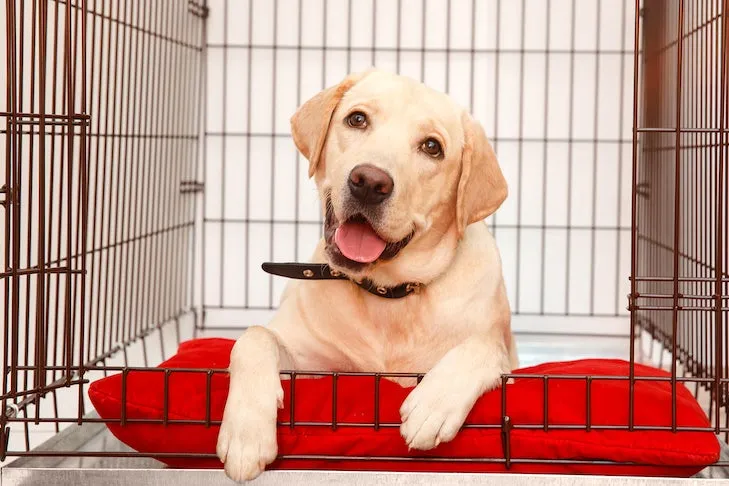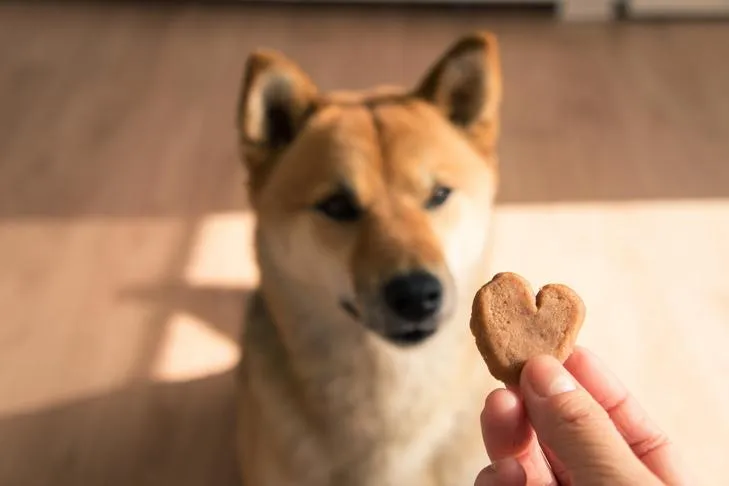Bringing a new puppy into your home is an exciting adventure, yet the journey of potty training can sometimes present challenges that leave new owners feeling overwhelmed. One common question among puppy parents, particularly those in apartments or with specific living situations, is how to effectively teach their furry friend to use a pee pad. While outdoor potty training is often the ultimate goal, puppy pads can serve as a vital tool in the initial stages, offering a practical solution for very young puppies or those with limited outdoor access. This guide will walk you through the essential steps and considerations for successfully training your puppy to use pee pads.
Whether you’re an elderly owner, an apartment dweller, or simply need to limit your puppy’s outdoor exposure until vaccinations are complete, understanding the nuances of indoor potty solutions like training pads or an indoor doggy potty spot is crucial. This article provides comprehensive tips to make the process smoother and more successful for both you and your new companion. If you’re looking for detailed guidance on how to puppy pad train a puppy, this resource will be invaluable.
Patience is Key in Puppy Pad Training
It’s natural to feel a sense of frustration when puppy potty training takes longer than anticipated. However, maintaining patience throughout this learning curve is absolutely essential. Remember that successful potty training is a gradual process, and it’s important not to set unrealistic expectations for your puppy. Their physical development plays a significant role; puppies generally cannot fully control their bladder until they are around 16 weeks old. A good rule of thumb is that a puppy can typically hold their bladder for their age in months plus one hour. This means a 4-month-old puppy can only hold it for about five hours, including overnight.
Different breeds also have varying needs; for instance, toy breeds often require more frequent potty breaks due to their faster metabolism and smaller bladders. Moreover, every puppy is an individual, even within the same breed. One puppy might be pad-trained in weeks, while another might need several months. Preparing yourself with either disposable or washable puppy pads, or considering a dedicated indoor “litterbox-type” dog potty station, can also contribute to a more positive training environment. Embracing patience will help you navigate this period with calmness and consistency, which are vital for your puppy’s success.
 A young Labrador Retriever puppy lying down peacefully next to its open kennel at home.
A young Labrador Retriever puppy lying down peacefully next to its open kennel at home.
Constant Supervision for Optimal Learning
Constant supervision is a cornerstone of effective puppy pad training, not just for safety but also as the primary method to prevent accidents and reinforce correct behavior. You cannot prevent your puppy from having an accident if you’re not actively observing them. Implementing a few strategies can significantly enhance your supervision efforts.
Take your puppy to their designated potty pad or indoor bathroom area frequently. The exact frequency will depend on their age and bladder control; for very young puppies, this might mean a trip every 15 minutes. It’s always better to make a “wasted” trip than to clean up an accident. Setting a timer can be a helpful reminder if you find yourself forgetting when to escort your puppy to the pad. Additionally, become attuned to your puppy’s telltale signs that they need to go, such as sniffing the ground, circling, or whining. The moment you observe these behaviors, immediately guide them to the potty pad. For puppies that tend to wander or are particularly energetic, using a leash clipped to your waist can help keep them within sight and limit their movements. When you cannot provide direct supervision, such as when you are busy or need to step away, ensure your puppy is placed in a crate or a secure, puppy-proofed area. This containment strategy helps minimize accidents and reinforces the idea of a designated potty spot. Understanding the need for structured supervision is critical, especially if you’re dealing with a spirited puppy who might seem out of control during the learning phase.
Leveraging a Crate for Potty Training
A crate is an indispensable tool in puppy pad training, primarily because dogs naturally prefer not to soil their sleeping area. When introduced properly, a crate becomes your puppy’s safe, den-like space rather than a form of punishment, tapping into their innate denning instinct. To maximize the effectiveness of crate training for potty purposes, several factors should be considered.
First, select an appropriately sized crate. It should be large enough for your puppy to stand up, lie down, and turn around comfortably, but without excessive space. If the crate is too big, your puppy might use one end as a toilet, which will hinder rather than help potty training. For larger crates intended to accommodate your dog into adulthood, use dividers to adjust the interior space as your puppy grows. Secondly, create positive associations with the crate. Place treats inside, feed your puppy their meals at the back of the crate, and leave food-stuffed chew toys in there. This helps your puppy view the crate as a rewarding and enjoyable place. Always reward your puppy for willingly entering and settling in their crate. While a crate is excellent for quiet time, never use it as a punishment. Most importantly for potty training, immediately take your puppy to their potty pad or designated outdoor area the moment they are released from their crate. This routine teaches them to relieve themselves outside their sleeping area.
 A cute Labrador Retriever puppy resting comfortably inside its open crate.
A cute Labrador Retriever puppy resting comfortably inside its open crate.
The Power of Consistency and Routine
When you’re figuring out [How To Get Puppy To Use Pee Pad], never underestimate the impact of a solid routine and unwavering consistency. Establishing a predictable schedule and sticking to it religiously is paramount for preventing accidents and ensuring your puppy has ample opportunities to relieve themselves in the correct location.
To maintain consistency, it’s vital to know when your puppy is most likely to need a bathroom break. Generally, puppies need to go immediately after waking up, after eating, following playtime, and after naps. Therefore, make it a habit to take your puppy directly to their potty pad every time one of these events occurs. Additionally, even if none of these triggers have happened, take your puppy to the pad if an hour or two has passed since their last successful potty break. If you bring your puppy to the pad and they don’t immediately go, don’t allow them to run off and play. Instead, return them to their crate for 10-15 minutes, then try again. Repeat this cycle until they do their business. Scheduling your puppy’s meals, rather than free-feeding, allows you to better predict their bathroom needs. Finally, choose a consistent location for the potty pad and try not to move it during the initial training phase. Moving the pad can confuse your puppy, leading to more accidents and prolonging the training process. This dedication to routine is the backbone of successful potty training. A potential alternative for apartment living, or if you’re exploring how to train your dog to pee on the balcony, also relies heavily on establishing a consistent location and routine.
Reward Good Behavior with Praise and Treats
Dogs are intelligent creatures that tend to repeat behaviors that are met with positive reinforcement. Using their potty pad correctly is no exception. By consistently rewarding your puppy with praise and treats every time they successfully use their pee pad, you significantly increase the likelihood of them repeating that desired behavior.
The timing of the reward is critical. You must reward your puppy immediately after they complete their business on the pad. Don’t wait to fetch treats from another room; have them readily available near the potty area. Keeping a small bowl or bag of treats conveniently close ensures you can deliver the reward at the precise moment the behavior occurs. If your puppy is easily distracted, using a leash can be beneficial. Walk them to the potty pad on the leash, and only unclip them for freedom to play after they have successfully relieved themselves. The freedom to explore and play then becomes an additional, highly motivating reward for their good behavior. This immediate and enthusiastic positive reinforcement helps your puppy quickly connect the act of using the pee pad with a pleasurable outcome.
 A focused Shiba Inu puppy sitting patiently, looking at a heart-shaped treat held by a person.
A focused Shiba Inu puppy sitting patiently, looking at a heart-shaped treat held by a person.
Transitioning from Pads to the Outdoors
Once your puppy has mastered the use of pee pads, the next natural step is to transition them to relieving themselves outdoors. Many of the principles applied during pad training can be adapted for outdoor training. Simply direct your puppy to the outdoor potty area instead of their pad. Here are some effective strategies to help with this transition:
Begin by teaching your puppy a specific potty cue, such as “hurry up” or “go potty.” Start using this cue every time your puppy is about to eliminate on their pad, and immediately reward them as soon as they finish. With consistent repetition, your puppy will associate the cue with the act of going to the bathroom, allowing you to prompt them when and where it’s convenient for you, including in the outdoor toilet area. A gradual physical transition of the pad is also key. Slowly move the potty pad closer to the door, then just outside the door, and eventually to the final outdoor location you’ve chosen. Move the pad only a small distance each day to avoid confusing your puppy. If your puppy catches on quickly, especially with the aid of potty cues, you can then begin to decrease the size of the potty pad once it’s outside. Cut the pad into smaller and smaller pieces until your puppy is comfortable using the bare ground. For more comprehensive guidance on getting your dog to pee outside and understanding when to take puppy outside for toilet, further resources can provide valuable insights to ensure a smooth transition.
Handling Accidents Calmly and Effectively
It’s an inevitable part of puppy training that accidents will happen. Our natural inclination might be to react negatively, but with puppies, it’s crucial to do the opposite: always praise and reward good behavior, and calmly address mistakes. This is especially true for potty training accidents. How you handle these incidents can significantly impact your puppy’s learning and their relationship with you.
If you catch your puppy in the act of having an accident, interrupt them gently without startling or scaring them. A quiet clap of your hands or a calm “oh-oh” should be enough to stop them mid-stream. Immediately after interrupting, take your puppy straight to their potty pad or the designated outdoor area. If they finish relieving themselves there, reward them profusely. Punishing your puppy during an accident will only teach them to hide their elimination from you, leading to them sneaking off to potty in private, which makes training much harder. If you discover an accident after it has already occurred, do not react. Lecturing or scolding your puppy afterward will not teach them anything about proper potty training, as they won’t associate the past act with your current reaction. Finally, thoroughly clean all accidents using an odor-destroying cleaner. Dogs are naturally drawn to the scent of their previous eliminations, so proper cleaning is vital to prevent them from repeatedly soiling the same spot.
Potty training, especially with pee pads, requires a blend of patience, consistent effort, and positive reinforcement. By understanding your puppy’s capabilities, establishing a clear routine, and calmly handling any setbacks, you can successfully guide your furry companion towards becoming a well-potty-trained member of your family.
